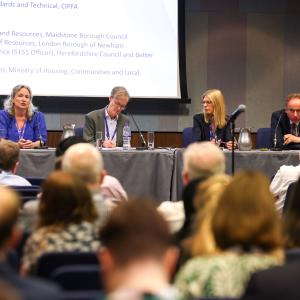The current planning system just encourages developers to hoard land, making housing less and less affordable. A land tax would help break the dysfunctional cycle
For decades, rising house prices were often seen as an unqualified good thing, especially for the expanding number of homeowners who saw steady rises in the value of their assets.
Now, house prices are on the rise again. But this time it’s different. Home ownership – among young people in particular - has declined in the past decade, and public opinion is starting to turn against rising prices. The upside is that we are finally starting to have a sensible debate about how to solve our dysfunctional housing market.
The latest contribution comes from Danny Dorling, professor of geography at Oxford, who is calling for a land and property value tax. At a minimum, this could mean a tax on undeveloped land to encourage developers to build on instead of hoard land with planning permission. In its fullest form, it could apply to built-on land and take a similar form to the new Irish property tax, whereby homeowners pay a tax in line with the value of their property.
A land or property value tax has a lot to recommend it. Because of the widespread consensus that house prices tend to go up, a primary motivation for those wishing to buy property is as an investment. And in a situation of restricted new supply of housing, it often turns out that investing in property is indeed a good bet. But the demand for housing as investment pushes prices up even further and reduces affordability.
A tax on value would reduce return on housing investment, and dampen price growth. It would also force those looking for places to invest money to look elsewhere – to more productive areas of the economy. A recent paper found that when house price growth is high, lending on property squeezes out lending to small businesses.
Finally, whilst property owners can make home improvements that increase the value of their homes, often they benefit from public investment in infrastructure like new transport links. A tax is one way of ensuring that those who benefit from these investments share in some of the costs.
There would be details to be worked out of course. A major challenge is how to deal with households that may be asset-rich, but income poor. One response is to effectively force such households to move to lower value properties where the tax is more affordable. In practice, this is likely to politically painful, to say the least. Additional measures may be needed, such as the promotion of good value equity release schemes that allowed these type of households to remain in their own homes.
And in all of this, we shouldn’t forget the reason why we have this problem in the first place: too little new supply compared to growing demand. Projections by the government and other organisations show growth of between 230,000 and 280,000 households a year over the next two decades.
The SMF’s Politics of Housing report shows that we haven’t built this level of housing since the 1970s, and that was with huge public sector spending programmes. You’d have to go back all the way to the 1930s interwar period – when planning restrictions were much more limited - to find a time when the private sector built to the level we need now.
The current planning system gives developers incentives to hoard land. The limited supply of land and property means everyone expects prices to go up. As a result, housing has become less and less affordable. Breaking this cycle will be vital to solving the housing market problem.
Nida Broughton is senior economist at the Social Market Foundation









